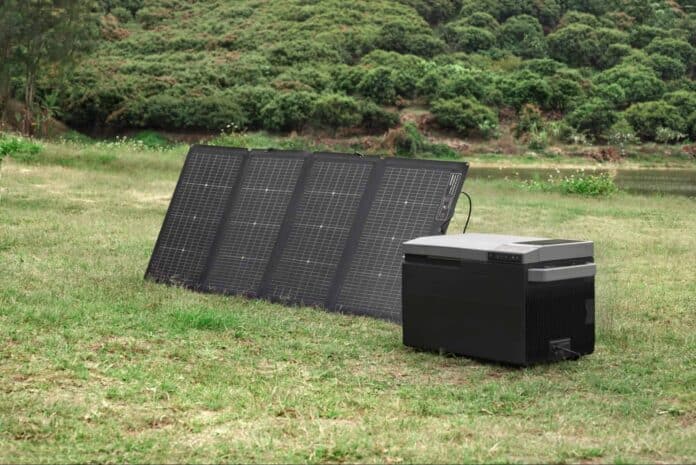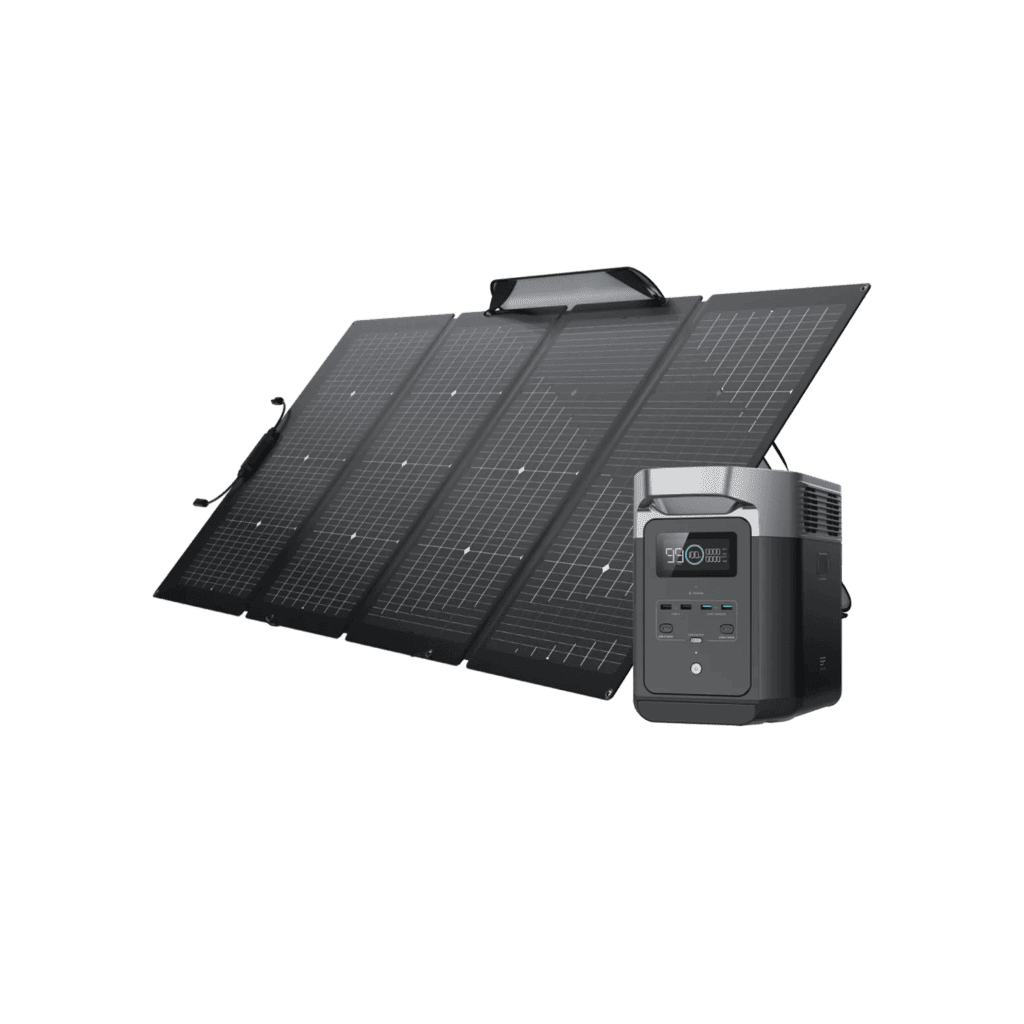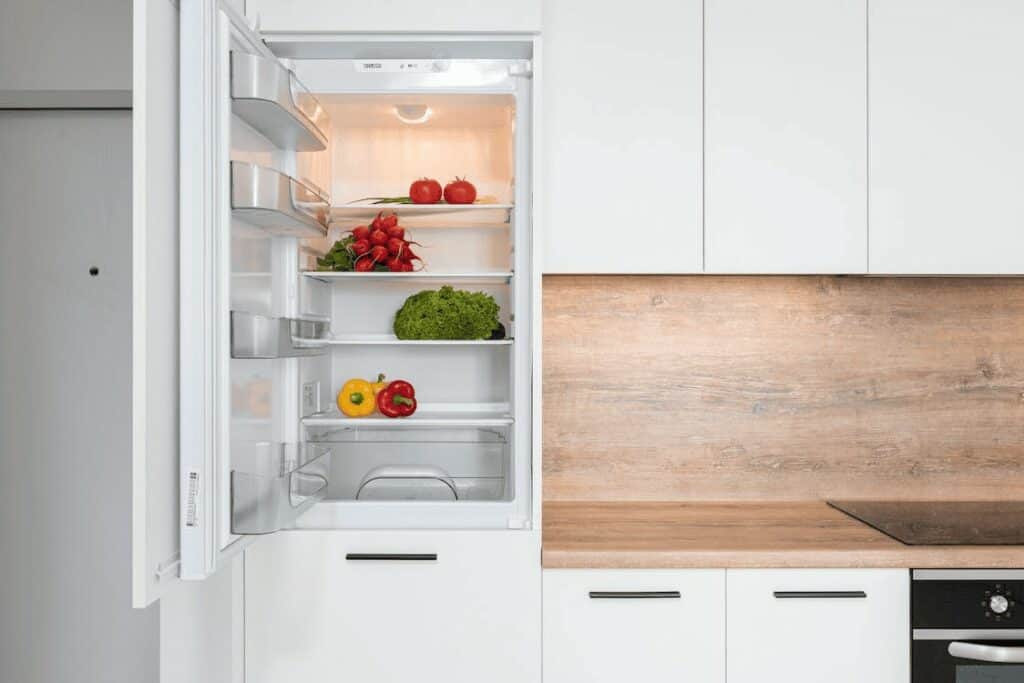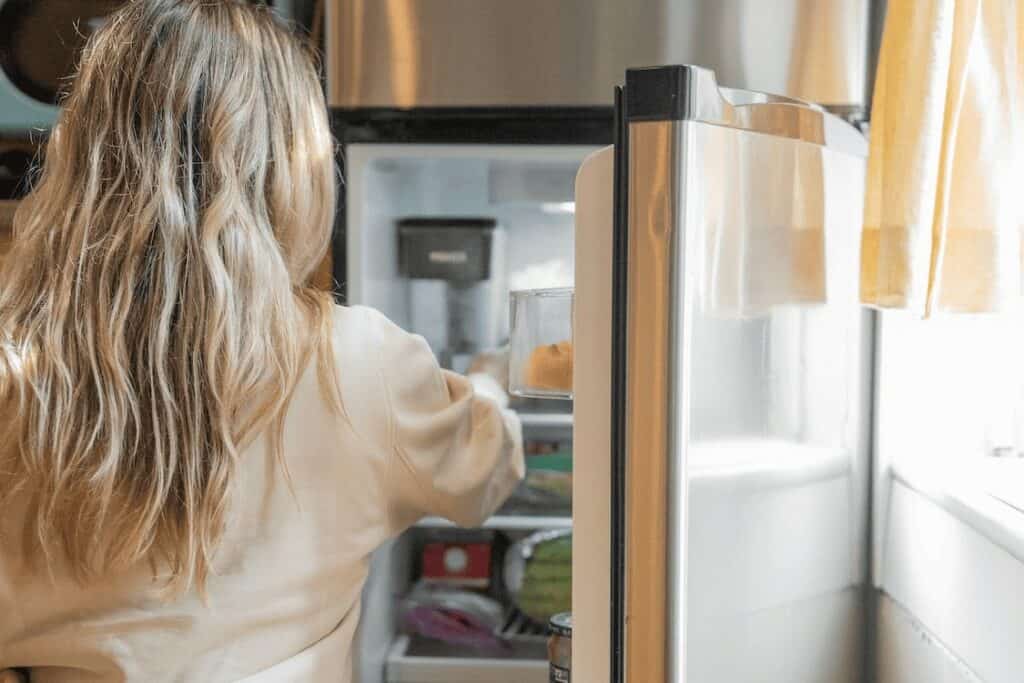Thanks to recent advancements in solar technology, you now have numerous options to power high-wattage appliances off-grid — including refrigerators!
But before you disconnect your fridge from the grid, you must calculate how many solar panels and other solar power system components you need.
If you want to learn how to power your refrigerator with solar, you’ve come to the right place. Here’s what you need to know to determine the number of solar panels you need.
There’s no one-size-fits-all answer to this question, but it’s not that complicated.
Read on for everything you need to know about keeping things cool with the power of the sun.

Calculating How Many Solar Panels You Need to Power Your Refrigerator
Solar power has emerged as the best residential option for renewable energy, and homeowners nationwide have embraced sustainability to reap the numerous benefits.
Switching to a green electricity solution helps the planet and your wallet at the same time. It’s a win-win!
If you’re just hoping to calculate the number of solar panels needed for a refrigerator, you can make a decent estimate in a few simple steps. First, you’ll need to estimate the power output of your solar panels. Rated power indicates the maximum output per panel under ideal conditions. But the real-world production will vary. The actual wattage your solar panels will produce depends on several factors, including: All of the above — and other factors — impact how much electricity your solar panel will produce. Also, note some of these conditions can vary considerably over the course of a day. Let’s use EcoFlow’s 400W Portable Solar Panel as an example. This portable PV panel is rated to produce 400W of electricity per hour under Standard Test Conditions, which include: As you can imagine, these conditions rarely exist in the real world for more than a few hours daily. A 400W solar panel will never exceed +/- 400W of electricity generation, but in cloudy conditions or under shade, it may generate as little as 40% of its rated power wattage. EcoFlow’s rigid and portable solar panels offer an industry-leading efficiency rating of 23%. For the purpose of making an estimate, it’s safe to assume that EcoFlow’s 400W solar panel will produce about 80% of its rated power on average during daylight hours under real-world conditions. So, on average, a 400W solar panel will produce 320W of electricity per hour. Assuming 4-5 hours of peak sunlight, one 400W portable solar panel will produce about 1.6 to 2.4 kWh of electricity daily. Remember this is an estimate, and the actual output may be more or less depending on peak sun hours and other factors. Refrigerators tend to be power-intensive appliances because they run 24/7. However, not all refrigerators have the same power consumption. If you have a newer model, it may be more energy efficient. If you have a full-size or larger refrigerator, it will require more power to run than a mini-fridge. Your fridge’s running and starting wattage is the most important thing to consider when determining how many PV panels you need to operate it reliably. Calculating how much electricity your fridge needs to run is easy, and you can use this method for any electrical appliance. It’s instructive to remember that watts/kilowatts (W/kW) indicate the amount of electricity an appliance or device requires to start and run. Electricity consumption over time is measured using watt-hours/kilowatt-hours (wH/kWh). You’ll probably recognise kWh from your electricity bills — that’s what your utility charges you for. Once you have the running watts for your fridge, the wH/kWh it will consume is easy to calculate: Running Watts (W/kW) x Hours of Daily Operation (H) = Total Daily Consumption (Wh/kWh) Let’s assume that your fridge consumes 300W of electricity hourly and you want it to run 24 hours a day: 300W x 24H = 7200wh/7.2kWh per day To run this 300W fridge for 24 hours a day using solar power alone, your PV system needs to be able to generate a minimum of 7.2 kWh per day. It’s always best to purchase an array that exceeds your expected power requirements by at least 10%. And don’t forget to make sure your system can deliver sufficient starting wattage. For example, EcoFlow’s DELTA Pro portable power station + 400W portable solar panel can provide 3.6 kW running wattage and starting watts of up to 7.2 kW using X-Boost. Now that you have your solar panels’ energy production and your refrigerator’s energy consumption, you can determine the number of PV panels required to keep your refrigerator running on solar around the clock. Actually — not so fast. Unless you have a Smart Device like EcoFlow’s Glacier Portable Refrigerator, you can’t operate a fridge using solar panels directly. You’ll need a portable power station or other balance of system to convert and store the DC electricity that PV panels gather from the sun as usable AC (household electricity). More on that later in the article. For now, let’s stick with solar panels. To estimate how many solar panels you’ll need to run a 300W fridge continuously, divide the appliance’s daily electricity consumption (kWh) by the estimated daily electricity generation capacity of your solar panel array. Using EcoFlow’s 400W portable solar panel, as in the example above, let’s assume it can produce around 2 kWh of electricity daily. And our example fridge needs 7.2 kWh per day to operate 24/7. Simply divide the energy required by the energy produced. The result indicates how many solar panels you’d need. 2 kWh (PV Panel Daily Production) / 7.2 kWh (Refrigerator Daily Electricity Consumption = 3.6 (400W Solar Panels Required) In this example, you would require 4 x 400W portable solar panels to reliably generate enough electricity to power your fridge using solar power alone. If that seems like a lot, remember that the power generation capacity of a solar panel we’re assuming is just a rough estimate. For a more accurate appraisal, you must consider the average number of peak sun hours in your location and the other factors mentioned above. If you’re considering off-grid solar power, a battery is not optional. Grid-tied solar power systems can tap into existing electrical infrastructure to make up any shortfall in generation capacity — unless there’s a power outage. Off-grid solar power systems require a battery to operate effectively. Why? It’s simple when you think about it. Solar panels only generate electricity during daylight hours. Without a solar battery, you wouldn’t be able to store the electricity your PV panels generate during the day to use at night — or at other times when generation capacity is insufficient, such as on overcast or rainy days. As mentioned above, you don’t need just a solar battery to operate a fridge off-grid. You also need a portable power station with solar charging or another balance of system (BOS). Essential components for off-grid solar systems include: If you’re building a DIY solar generator, you’ll need to ensure all of the components above (and others) are compatible with each other — and with your solar panels. Luckily, there’s an easier solution. EcoFlow offers portable power stations, solar generators, and power kits with all the BOS components — including the solar battery — built-in. Simply plug and play with portable, rigid, and/or flexible solar panels. Ensure that the portable power station you choose has sufficient AC power output (starting and running watts) and solar input capacity to run your fridge. For standard household refrigerators, the DELTA Series with 400W solar panel(s) is your best bet. For an innovative, portable solution, check out EcoFlow’s Glacier Portable Refrigerator. The Glacier is one of the only fridges on the market that allows direct solar charging. You can plug a 220W BiFacial Portable Solar Panel directly into the fridge — no portable power station or BOS required. The Glacier is a 38L compact refrigerator/freezer — it even makes ice! It can run for 24 hours on a single charge and up to 40 hours with the optional plug-in battery. And you can continuously recharge during operation by plugging in 2 x 110W or 1 x 220W solar panels. If you’re looking for a portable refrigerator to take off-grid, there’s no better option on the market. But don’t take our word for it — Check out the reviews! If your goal is to run a standard electric household or portable refrigerator using off-grid solar, a portable power station or other balance of system that includes a solar battery is not optional. As outlined above, solar panels cannot directly power a standard fridge. They require a battery and other BOS components to operate. The Glacier Portable Refrigerator is an exception to the rule. It’s one of the only portable fridges on the market that supports direct solar charging with up to 220W of solar input capacity. If you’re not interested in buying a new fridge, your existing fridge will require a portable power station in addition to solar panels to operate with off-grid solar power. Even if you DO purchase a Glacier, plugging it into a DELTA 2 Portable Power Station w/220W solar panel will give you extended run times, and it can support other appliances simultaneously. The DELTA Pro w/400W solar panel(s) will give you even longer operating times for a Glacier or standard fridge. Its expandable capacity even gives you the option to customise a whole home generator that can run your fridge (and virtually anything else), even during extended power outages. Whether a 200-watt solar panel is enough to run a refrigerator depends on how much power your solar panel produces and how much energy your refrigerator consumes. Use the calculations outlined above to determine your refrigerator’s power requirements and solar panel’s energy production. The answer depends on your solar panel’s power production and your energy requirements. Factors like overcast skies can prevent the solar panel from achieving its rated power output. You can decide if a 300W PV panel is sufficient by determining the energy requirements and estimating the electricity production. Using the information in this article, you can determine how much power your refrigerator needs to run and how much electricity your panels can produce under ideal and real-world conditions. If you want to power your refrigerator off-grid, ensure that your solar panel array and portable power station (or other balance of system) can provide sufficient running and starting wattage in AC output AND store enough electricity to operate your fridge for the amount of time that you require. Determining how many solar panels it takes to operate a refrigerator requires some homework. Once you’ve run the numbers according to the calculations above, you can purchase an off-grid solar power system to meet your fridge’s electricity needs. If you’re looking for a simple solution — particularly if your goal is to have a powerful off-grid refrigerator/freezer you can take anywhere — consider the EcoFlow Glacier Portable Refrigerator. With direct solar charging, an optional extra plug-in battery, and the ability to charge using a portable power station, the Glacier can run up to 40 hours off-grid — or more! The Glacier’s affordable price point might just make it the ultimate off-grid refrigeration solution for you!Determine How Many Watts Your Solar Panels Produce
(Basically, the irradiance used for testing is the equivalent of direct sunlight at the brightest time of day, completely free of obstructions like clouds or shade.)Understanding rated power is crucial to ensuring your solar panel array meets your electricity consumption needs.
Determine How Many Watts Your Refrigerator Uses
Divide the Number of Watts Required by the Watts Generated
Do I Need a Battery To Run a Refrigerator With Solar?
Do I Need a Portable Power Station to Run a Refrigerator With Solar?
Frequently Asked Questions
Can a 200-Watt Solar Panel Run a Refrigerator?
Can a 300-Watt Solar Panel Run a Refrigerator?
What Size Solar Panel Do I Need to Power a Refrigerator?
Final Thoughts








